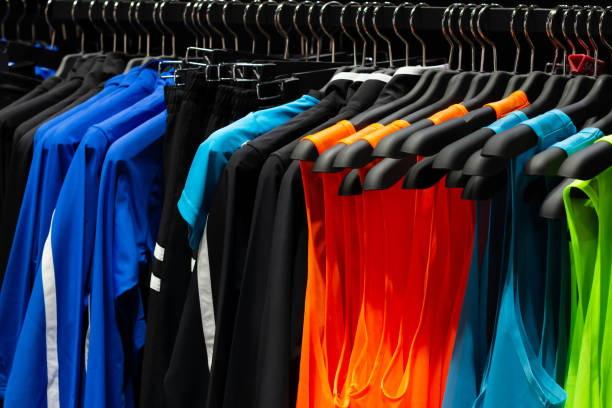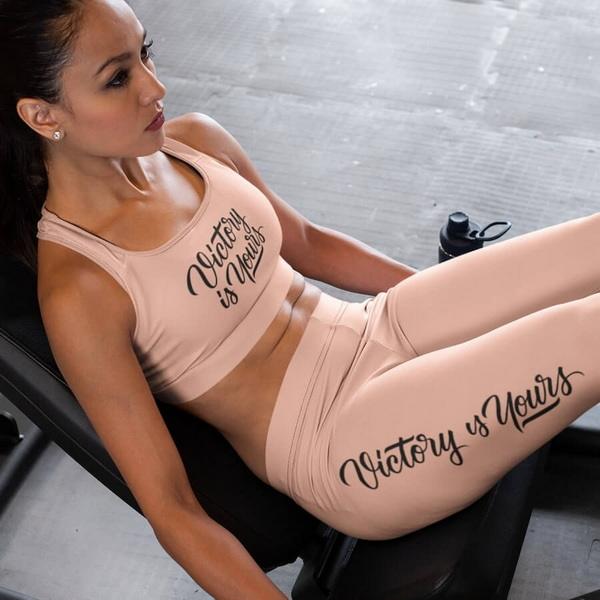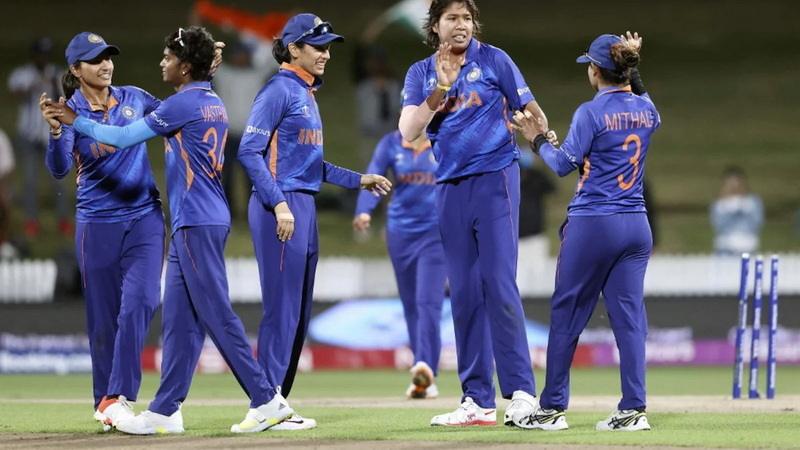Content Menu
● The Environmental Impact of Traditional Sportswear
● The Business Case for Sustainable Custom Sportswear
● Sustainable Materials: The Foundation of Eco-Friendly Sportswear
>> Bamboo
>> Regenerated Nylon and Recycled Wool
● Eco-Friendly Printing and Dyeing Technologies
>> Water-Based Screen Printing
>> Direct-to-Garment (DTG) Printing
>> Sublimation and Discharge Printing
>> Eco-Friendly Heat Transfers
● Sustainable Manufacturing Practices
>> Renewable Energy and Water Conservation
>> Plastic-Free and Recyclable Packaging
>> Ethical Labor and Social Responsibility
● Supply Chain Innovations in Sustainable Sportswear
>> Traceability and Transparency
>> Collaboration and Certification
● Product Development: Balancing Performance and Sustainability
>> Customization and Personalization
● Advanced Technologies Driving Sustainability
>> Digital Fabric Printing and Automation
>> Blockchain for Supply Chain Integrity
>> Biodegradable and Bio-Based Materials
● Consumer Engagement and Education
● Challenges and Opportunities
● Case Studies: Leading Brands in Sustainable Custom Sportswear
>> Green Shirts
● Frequently Asked Questions (FAQ)
>> 1. What are the most sustainable materials for custom branded sportswear?
>> 2. How do eco-friendly printing methods differ from traditional ones?
>> 3. How can brands ensure ethical and sustainable practices across their supply chain?
>> 4. Does sustainable sportswear compromise on performance or quality?
>> 5. What are the key trends shaping the future of sustainable custom sportswear?
Sustainability has become a defining force in the global sportswear industry. As consumers, brands, and regulatory bodies increasingly demand eco-friendly practices, custom branded sportswear manufacturers are under pressure to innovate across the entire supply chain. This article explores the technical, operational, and strategic advancements driving sustainability in custom sportswear, from material sourcing and production to ethical labor, packaging, and future trends. We’ll also answer key questions for businesses seeking to lead in eco-friendly apparel.

The Environmental Impact of Traditional Sportswear
Conventional sportswear production is resource-intensive and environmentally damaging. Key challenges include:
– Raw Material Sourcing: Most sportswear relies on virgin polyester (petroleum-based) or conventional cotton, both of which have significant carbon, water, and chemical footprints.
– Chemical Usage: Traditional dyeing and printing processes use toxic chemicals and large volumes of water, contributing to pollution and health risks.
– Overproduction and Waste: Mass manufacturing often leads to unsold inventory, which ends up in landfills, compounding the industry’s waste problem.
– Packaging and Logistics: Excessive plastic packaging and long-distance shipping further increase the carbon footprint.
The Business Case for Sustainable Custom Sportswear
Adopting sustainable practices is not just about environmental stewardship; it’s a strategic business imperative:
– Brand Differentiation: Eco-friendly credentials enhance brand value and appeal to environmentally conscious consumers.
– Regulatory Compliance: Increasingly strict environmental and labor regulations require proactive compliance.
– Cost Savings: Efficient resource use, waste reduction, and renewable energy adoption can lower operational costs over time.
– Market Demand: Consumer demand for sustainable, personalized products is surging, especially among younger demographics.
Sustainable Materials: The Foundation of Eco-Friendly Sportswear
Organic Cotton
– Grown without synthetic pesticides or fertilizers, organic cotton supports soil health and biodiversity.
– Requires less water than conventional cotton and is biodegradable, making it ideal for both casual and performance wear.
Recycled Polyester
– Produced from post-consumer PET bottles or textile waste, recycled polyester retains the performance qualities of virgin polyester but with a reduced environmental impact.
– Reduces plastic waste and energy consumption during production.
Bamboo
– Fast-growing, requires minimal water, and needs no pesticides.
– Naturally antibacterial, moisture-wicking, and soft, bamboo is excellent for high-performance sportswear.
Regenerated Nylon and Recycled Wool
– Regenerated nylon is sourced from waste materials, including old fishing nets and carpets.
– Recycled wool reduces the need for new wool production, conserving resources and minimizing waste.
Eco-Friendly Printing and Dyeing Technologies
Water-Based Screen Printing
– Utilizes water-based inks free from PVC and phthalates, reducing chemical exposure for workers and the environment.
– Produces soft, breathable prints and uses less water and energy than traditional methods.
Direct-to-Garment (DTG) Printing
– Applies water-based inks directly to garments using inkjet technology.
– Enables on-demand production, minimizing overproduction and waste.
Sublimation and Discharge Printing
– Sublimation uses heat to transfer dye onto polyester fabrics, producing vibrant, durable prints with minimal waste.
– Discharge printing removes dye from fabric to create designs, using fewer chemicals.
Eco-Friendly Heat Transfers
– Employs pre-printed designs on transfer paper with eco-friendly inks.
– Ideal for small runs and custom orders, reducing waste and chemical use.
Sustainable Manufacturing Practices
Made-to-Order Production
– Garments are produced only after an order is placed, eliminating overproduction and reducing inventory waste.
– Supports resource conservation and minimizes carbon emissions from storage and disposal.
Renewable Energy and Water Conservation
– Leading manufacturers invest in solar, wind, and other renewable energy sources to power production facilities.
– Closed-loop water systems recover and reuse water during dyeing and printing, minimizing water waste.
Plastic-Free and Recyclable Packaging
– Brands are shifting to paper-based, recyclable packaging materials, reducing plastic waste and aligning with consumer expectations.
Ethical Labor and Social Responsibility
– Ensuring fair wages, safe working conditions, and ethical treatment of workers is integral to sustainable production.
– Brands are increasingly transparent about their supply chain practices, building trust with consumers and partners.
Supply Chain Innovations in Sustainable Sportswear
Traceability and Transparency
– Advanced tracking systems and digital platforms enable brands to monitor every stage of the supply chain, from raw material sourcing to finished product delivery.
– Transparency builds consumer trust and supports compliance with ESG (Environmental, Social, and Governance) standards.
Circular Economy Models
– Brands are exploring take-back schemes, garment recycling, and upcycling to extend product lifecycles and reduce landfill waste.
– Circular models encourage resource efficiency and foster long-term customer loyalty.
Collaboration and Certification
– Working with certified suppliers and third-party organizations ensures adherence to best practices in sustainability and labor ethics.
– Certifications such as GOTS (Global Organic Textile Standard), OEKO-TEX, and Fair Trade provide assurance to consumers and partners.
Product Development: Balancing Performance and Sustainability
Design for Durability
– Sustainable sportswear must meet high standards of durability, comfort, and performance.
– Brands are investing in R&D to develop fabrics and finishes that withstand rigorous use while maintaining eco-friendly credentials.
Customization and Personalization
– On-demand printing and modular design allow for extensive customization, reducing waste and aligning products with consumer preferences.
– Digital design tools streamline the development process, enabling rapid prototyping and efficient production.
Innovative Material Blends
– Combining recycled synthetics with natural fibers (e.g., recycled polyester with organic cotton) delivers optimal performance and sustainability.
– Ongoing research into bio-based and biodegradable materials promises further advancements in eco-friendly sportswear.

Advanced Technologies Driving Sustainability
Digital Fabric Printing and Automation
Digital fabric printing technology allows for precise application of designs directly onto textiles, significantly reducing ink waste and water consumption compared to traditional screen printing. Automation in cutting and sewing processes optimizes fabric utilization, minimizing offcuts and scrap. These technologies enable manufacturers to produce complex custom designs efficiently while adhering to sustainability goals.
Blockchain for Supply Chain Integrity
Blockchain technology is increasingly used to enhance transparency and traceability in the sportswear supply chain. By securely recording every transaction and movement of materials, brands can verify the authenticity of sustainable claims, monitor labor conditions, and ensure compliance with environmental standards. This builds consumer confidence and mitigates risks associated with greenwashing.
Biodegradable and Bio-Based Materials
Research into biodegradable polymers and bio-based textiles is expanding rapidly. Materials derived from algae, mycelium (fungi), and other renewable sources offer promising alternatives to synthetic fibers. These innovations could revolutionize sportswear by enabling products that naturally decompose at the end of their lifecycle, reducing landfill impact.
Consumer Engagement and Education
Sustainability in sportswear also depends on informed consumers. Brands are investing in educational campaigns to raise awareness about the environmental impact of apparel and the benefits of choosing eco-friendly options. Interactive platforms, QR codes on labels, and storytelling through digital media help consumers understand the lifecycle of their garments and encourage responsible purchasing and care practices.
Challenges and Opportunities
While the shift to sustainable custom sportswear offers immense benefits, it also presents challenges:
– Cost Implications: Sustainable materials and processes can initially be more expensive, requiring careful cost management and consumer education to justify premium pricing.
– Supply Chain Complexity: Ensuring sustainability across global, multi-tiered supply chains demands robust systems and partnerships.
– Scalability: Balancing customization, sustainability, and mass production requires innovative manufacturing models and flexible technologies.
However, these challenges also present opportunities for differentiation, innovation, and leadership in a rapidly evolving market.
Case Studies: Leading Brands in Sustainable Custom Sportswear
Green Shirts
Green Shirts offers 100% organic, fair-trade sportswear with certified organic inks. Their product range includes running shirts, yoga wear, and accessories, all customizable with names, logos, or designs. Their commitment to transparency and sustainability has earned them a loyal customer base.
Print Natural
Print Natural specializes in organic, water-based, and plant-based inks for custom apparel printing. Using unique mineral and plant-based dyes, they minimize environmental impact while delivering vibrant, durable prints.
Sportswear of Tomorrow
This brand combines sublimation printing with bio-based materials to produce premium custom sustainable sportswear for various sports. Their innovative approach integrates advanced materials with cutting-edge printing technologies.
AM Custom Clothing
AM Custom Clothing provides recycled custom sportswear made from 100% recycled polyester and regenerated cotton yarn. They offer both made-to-order and standard recycled products, emphasizing waste reduction and resource efficiency.
Conclusion
Sustainability in custom branded sportswear is no longer optional—it’s a business imperative and a powerful driver of brand value. By embracing eco-friendly materials, innovative production techniques, ethical labor practices, and circular economy models, brands can lead the way in responsible sportswear manufacturing. The journey toward sustainability is ongoing, but those who invest in green innovation today will shape the future of the industry and win the loyalty of tomorrow’s conscious consumers.
Ready to elevate your brand with sustainable custom sportswear? Contact our team of experts to discover how we can help you design, develop, and deliver eco-friendly apparel that stands out—responsibly.

Frequently Asked Questions (FAQ)
1. What are the most sustainable materials for custom branded sportswear?
The leading sustainable materials include organic cotton, recycled polyester, bamboo, regenerated nylon, and recycled wool. These materials reduce environmental impact by minimizing resource use, chemical inputs, and waste generation.
2. How do eco-friendly printing methods differ from traditional ones?
Eco-friendly printing methods, such as water-based screen printing and direct-to-garment (DTG) printing, use non-toxic inks and require less water and energy. They produce less waste and are safer for both workers and the environment compared to traditional plastisol or chemical-based methods.
3. How can brands ensure ethical and sustainable practices across their supply chain?
Brands should work with certified suppliers, implement traceability systems, and adhere to recognized standards like GOTS, OEKO-TEX, and Fair Trade. Transparency, regular audits, and collaboration with ethical partners are essential for maintaining high sustainability standards.
4. Does sustainable sportswear compromise on performance or quality?
No. Advances in material science and production technology have enabled sustainable sportswear to match or exceed the performance, durability, and comfort of conventional products. Brands are investing in R&D to ensure eco-friendly options meet the demands of athletes and consumers alike.
5. What are the key trends shaping the future of sustainable custom sportswear?
Key trends include the adoption of circular economy models, use of advanced sustainable fabrics, integration of digital manufacturing technologies, and increased consumer engagement in sustainability initiatives. Brands that embrace these trends will be well-positioned for long-term success.
Hot Tags:
Sustainability In Sportswear, Custom Branded Sportswear, Eco Friendly Sportswear, Sustainable Athletic Apparel, Green Sportswear Production, Ethical Sportswear Manufacturing, Eco Sportswear Brands, Sustainable Activewear, Environmentally Friendly Sportswear, Green Manufacturing Sportswear, print on demand sportswear,print on demand gym wear, sublimated volleyball jerseys, activewear print on demand, China, Global, OEM, private label, manufacturers, factory, suppliers, manufacturing company, customized, custom
